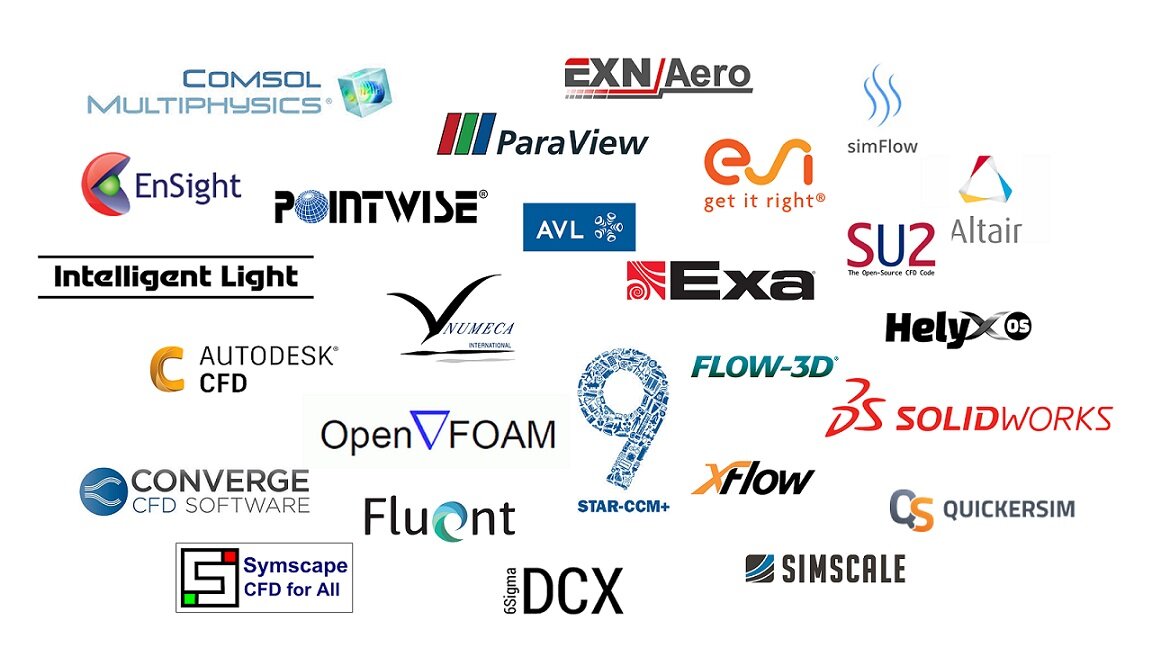Navigating the CFD Software Landscape: A Comprehensive Comparison and User Insights
The website CFD-Online lists over 200 CFD related software packages, with new packages coming online monthly claiming capability and performance improvements over established packages.
Such a variety can be overwhelming when trying to identify which is the right tool for you. That is why we've written this review based on our personal experience with many of the codes discussed here and our impression of capabilities based on our research where we don't have first-hand experience.
CFD software packages fall into one of the following four categories, more-or-less: CAD Embedded, Open-Source, Semi-Comprehensive (often for with niche specializations), and Comprehensive. We’ve written a bit about each, as well as a discussion of the insights gained from a user survey we conducted, in the five part series to follow.
Simcenter STAR-CCM+ - Game-Changing Multiphysics Simulation Platform
Part 1: CAD Embedded CFD Software Packages - Featuring SolidWorks Flow Simulation, Autodesk CFD, ANSYS Discovery Live and more.
Part 2: Open-Source CFD Software Packages - Featuring OpenFOAM, SU2, MFIX and SimScale
Part 3: Semi-Comprehensive CFD Software Packages - Featuring COMSOL CFD, CONVERGE CFD and NUMECA OMNIS
Part 4: Comprehensive CFD Software Packages - Featuring Simcenter STAR-CCM+ and ANSYS Fluent
Part 5: CFD User Survey Results
CAD integrated: The most widely used CFD platforms are the SolidWorks and Autodesk Inventor CFD add-ons integrated within those native 3-D solid modeling platforms. This type of CFD package is marketed to product designers who are primarily seeking to solve steady-state, single-phase, non-reacting flow problems and with a focus on ease of use. These packages typically include native meshing and post-processing tools. Conjugate heat transfer, fluid-structure interactions, chemical reactions, multiphase flows and other high-end capabilities are typically out of reach for these packages.
Open Source wrappers: In order to make open-source more user friendly developers have wrapped codes such as Open-FOAM into more user friendly GUI environments bundled with additional software such as pre- and post-processors. Examples are Visual-CFD, HELYX and simFlow. An interesting recent twist on this concept is that of web browser based simulation, as provided, for example, by SimScale. Wrappers do provide the convenience of a single interface, but suffer from the fact that the platform is an additional level of separation between the user and the execution code. The obvious arguments for adopting a wrapper platform is that they can provide some of the convenience of a full-service commercial platform with a much lower price. The arguments against wrapper platforms are that they don’t overcome some of the key limitations of open-source, i.e. limited user-support and lack of specialized capabilities, while adding another level of software with its own potential for bugs and which may be poorly supported and developed in its own right.
Specialty: Meanwhile, there are many codes that are targeted to niche markets with specialized functionality. CONVERGE is a multipurpose code with a high level of sophistication with regards to moving meshes, multiphase flows and turbulent combustion as needed for their focus on the automotive, internal combustion market segment. AVL Fire is similarly focused on the automotive engine market. Other heavily targeted platforms include the FloTHERM suite targeting the electronics industry, FINE/Marine for marine applications, 6Sigma for data center ventilation, EXA for external aerodynamics, XFlowCFD for Lattice-Boltazman simulations, SPH-flow for smoothed particle hydrodynamics simulations, CPFD for fluidized bed reactors, and CFX for turbomachinery, among many others. These platforms can be cost effective if you can match their capabilities to your needs with a high level of confidence.
Comprehensive Packages: For many years, the gold standards in CFD simulation have been Fluent and Star-CCM+ and they are both excellent and diverse tools. Fluent seems to capture more market share in electronic and industrial product markets and Star-CCM+ in the aerospace, automotive and energy industries. COMSOL’s CFD Module and Altair’s AcuSolve are less widely used and are components of broader multiphysics simulation platforms. Never-the-less, they have quickly grown in scope with additional capabilities that are now approaching those of the big two. All four come equipped with meshing and post-processing capabilities and can input from, and output to, all of the popular filetypes and formats. The primary drawback to these packages is their price tag.
Even comprehensive CFD packages are relatively inexpensive compared to the personnel costs required to effectively utilize them.
Costs: CFD packages are relatively inexpensive compared to the personnel costs required to maintain and utilize them. The relative cost difference between commercial and open-source packages are also small and are typically outweighed by the increased overhead needed to setup and interface with open-source software (and the Linux based hardware typically required). The relative cost savings of the CAD integrated package are minimal and such packages are mostly applicable where product designers prefer to have CFD capability natively integrated within the CAD framework.

